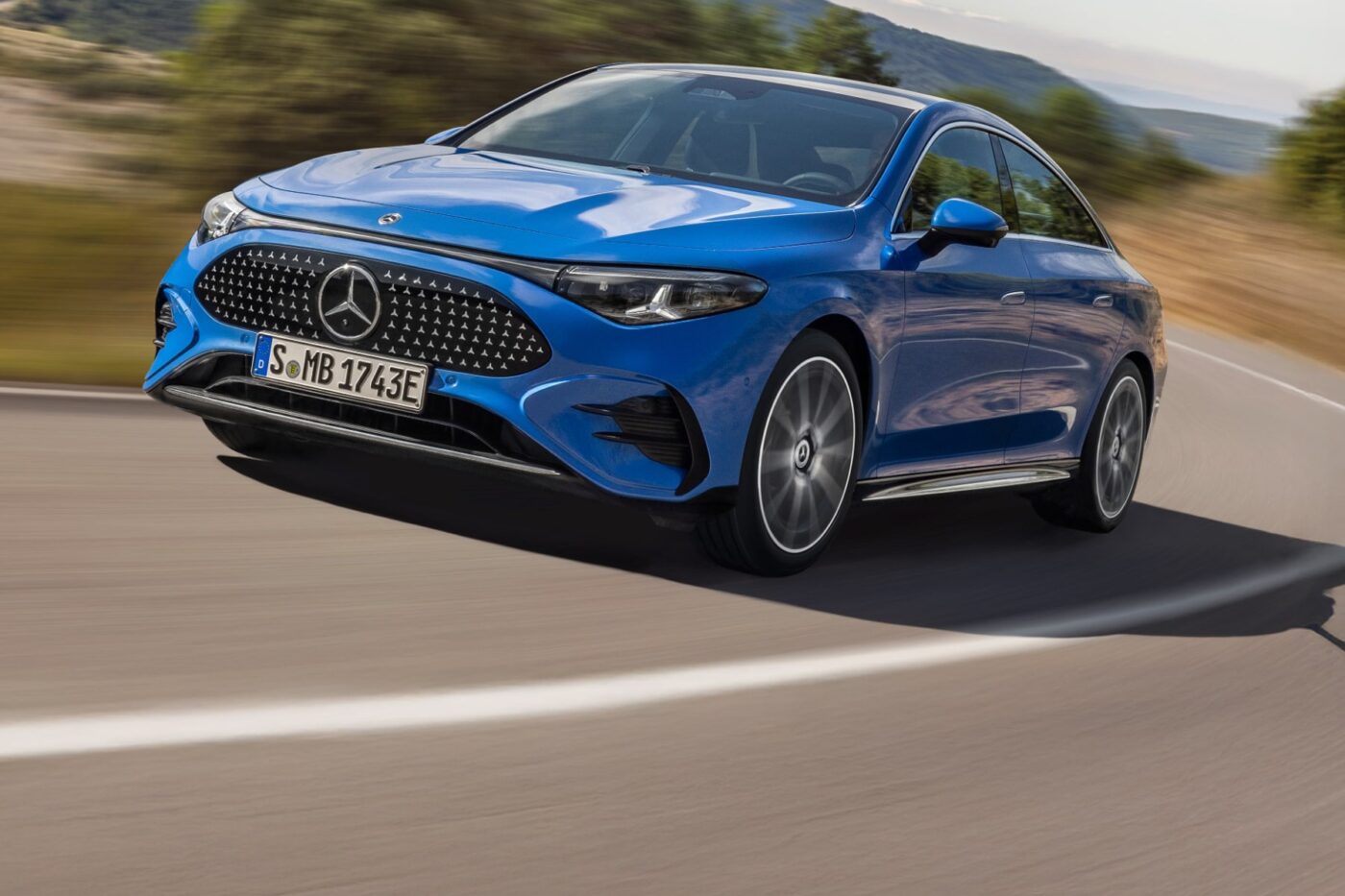
World premiere of the Mercedes CLA: The ‘one-litre car’ enters the electric age
Mercedes’ electric reboot starts with the name. The 4.72-metre-long sedan will not be launched as the ‘EQCLA’ or ‘EQA Sedan,’ but simply as the CLA. As with the G-Class, which is no longer marketed as the EQG, the electric variants will officially be labelled “with EQ technology.” In the press release for the world premiere, where manufacturers usually take great care with model designations, Mercedes refers to the CLA 250+ and CLA 350 4MATIC in many places. In other words, the Mercedes models have been called that for many years, without additionally specifying the term ‘electric.’ The new vehicles are simply embedded in the familiar model structure.
However, developing the new CLA generation was anything but easy because the sedan is also based on a completely new platform, the Mercedes Modular Architecture (MMA). Since the larger models based on the EVA2 never really made the breakthrough, no stone was left unturned in the development of the MMA and the CLA. Mercedes-Benz already provided a deep insight into the technology of the new platform last autumn at an extensive technology workshop, which we summarised in this article. We will revisit the most important facts at the world premiere of the CLA because the final technical data is now available.
To summarise: with the MMA, Mercedes is introducing an 800-volt system to enable not only significantly higher charging power and shorter charging times but also to improve the efficiency of the overall system.
There are two battery options for the MMA: a 58-kWh battery with LFP cells in the price-conscious base version and an 85-kWh battery with NMC cathode and silicon oxide admixture in the anode graphite for the top versions. Mercedes developed the electric motor on the rear axle – called the electric powertrain 2.0 or eATS 2.0 – in-house and equipped it with a two-speed transmission to increase efficiency and thus achieve lower consumption and a better range. In the all-wheel-drive model, an electric drive from an external supplier is used on the front axle. The important software is also completely new.
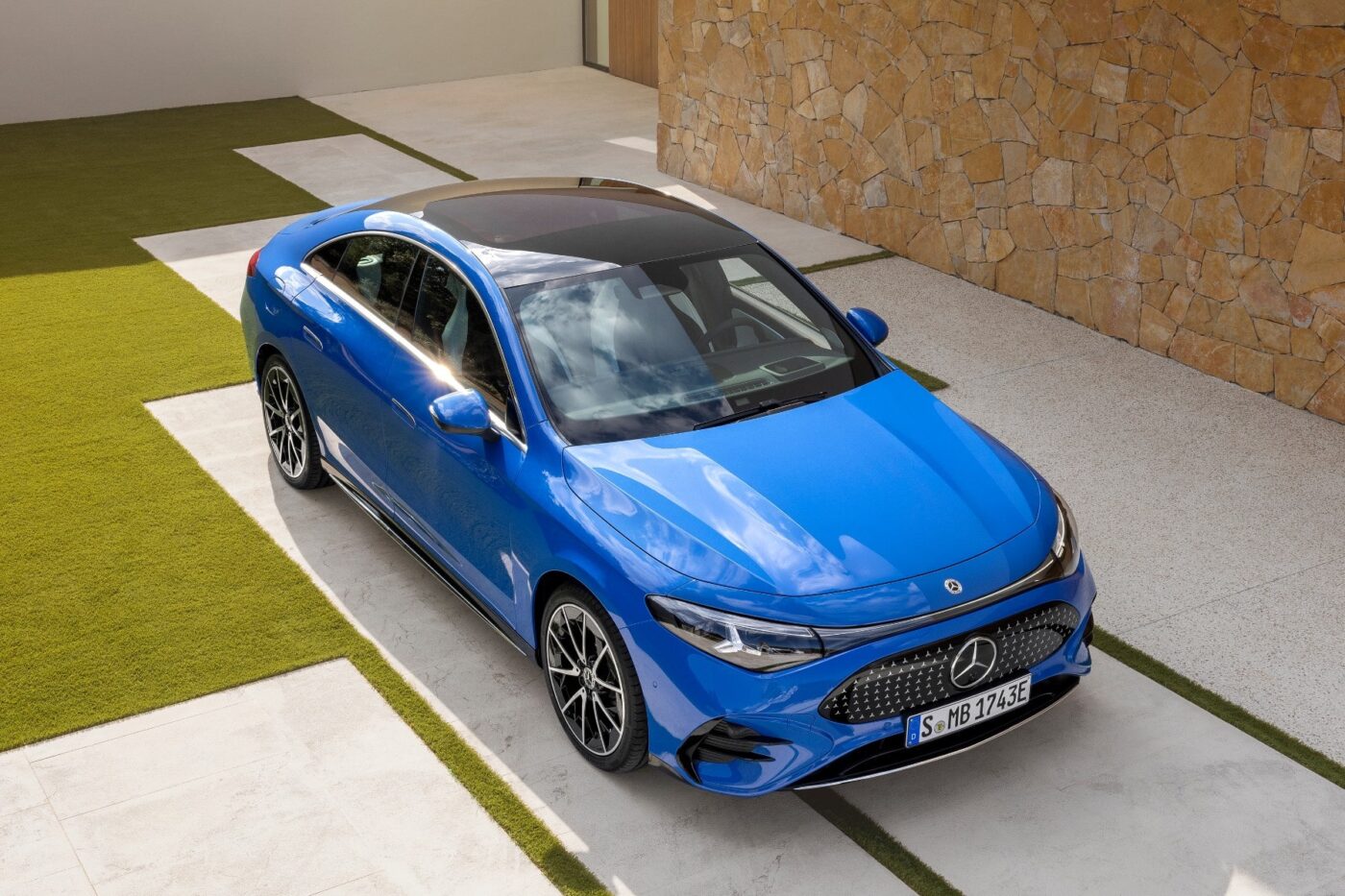

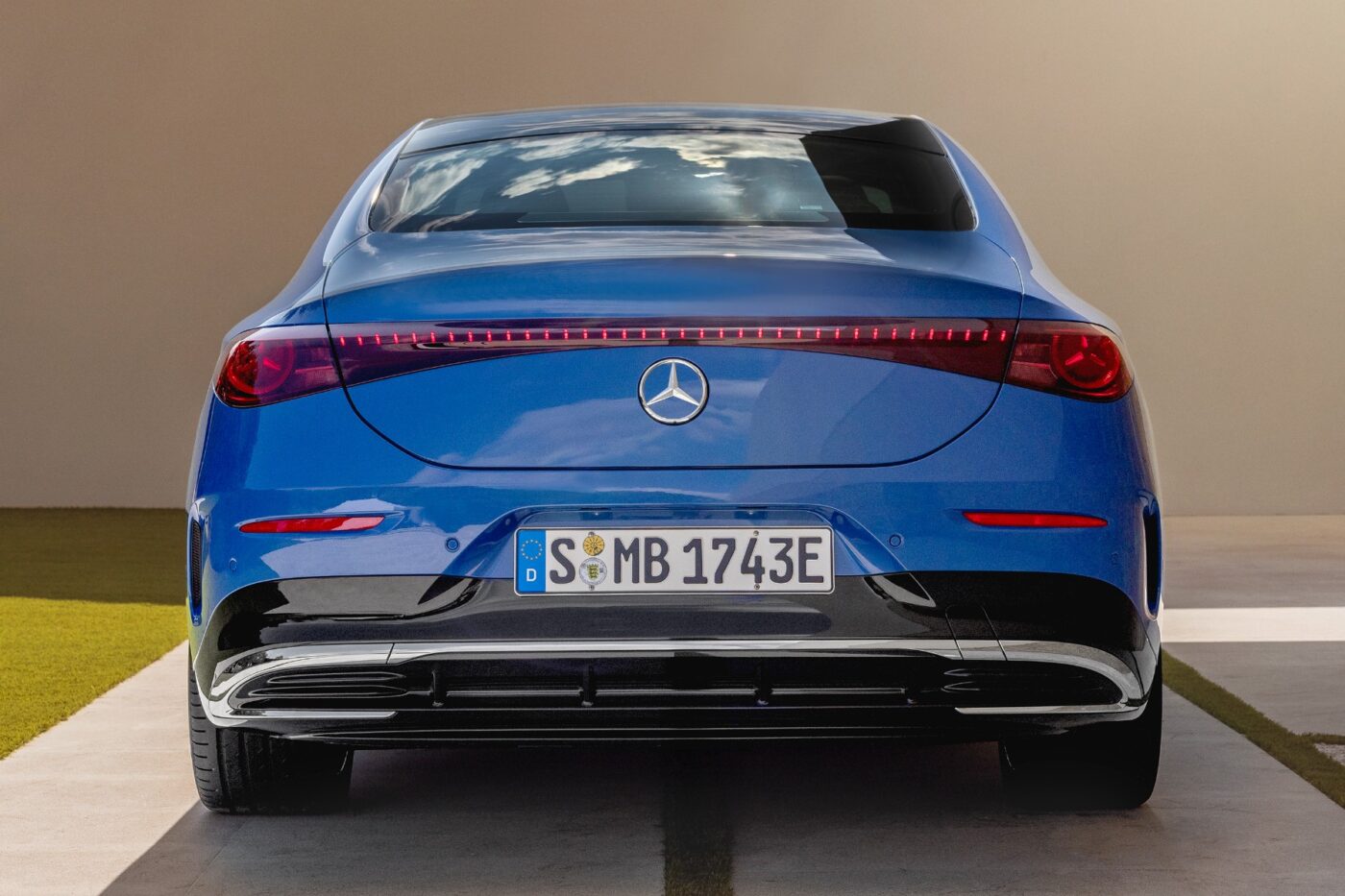
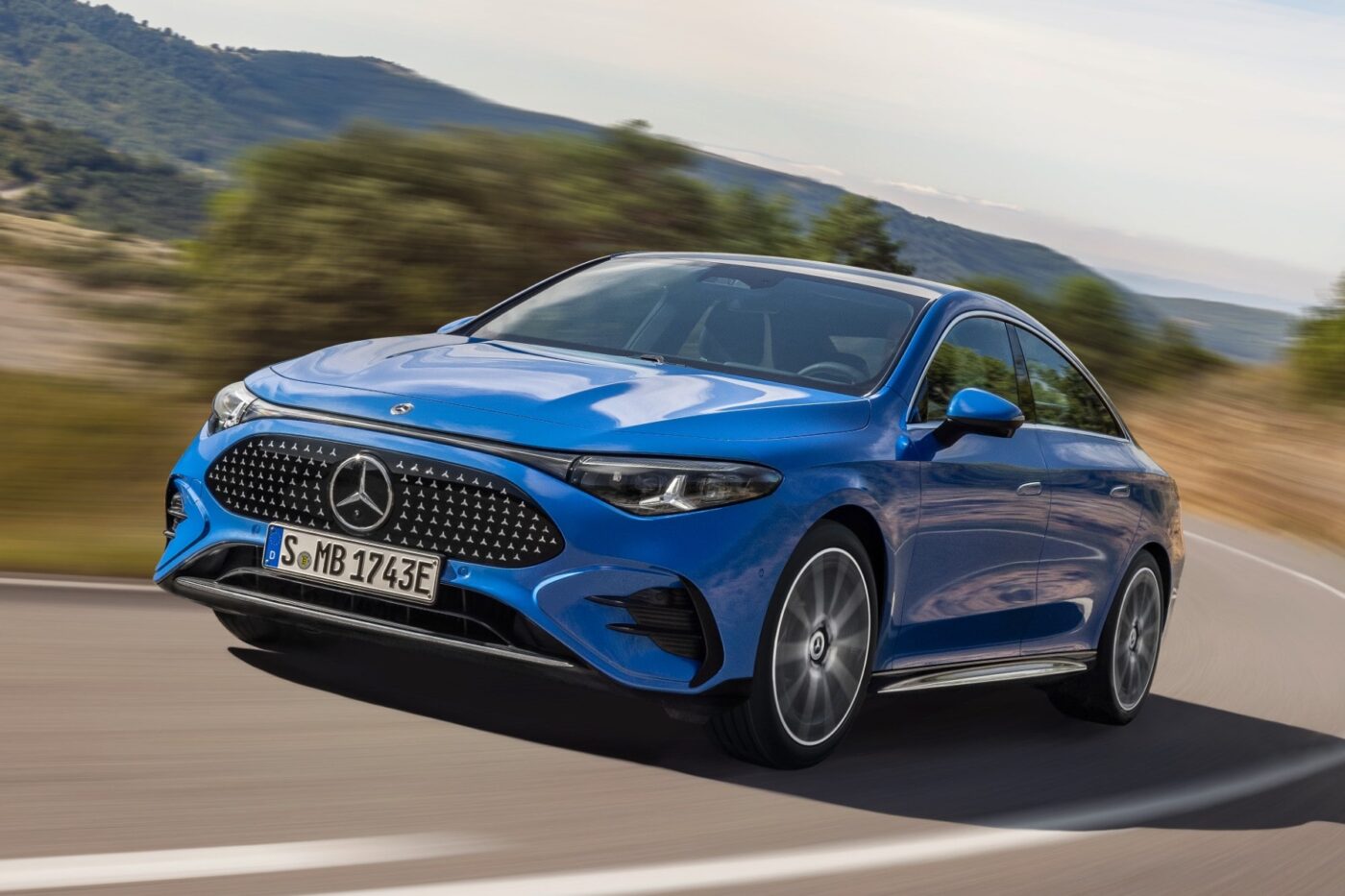
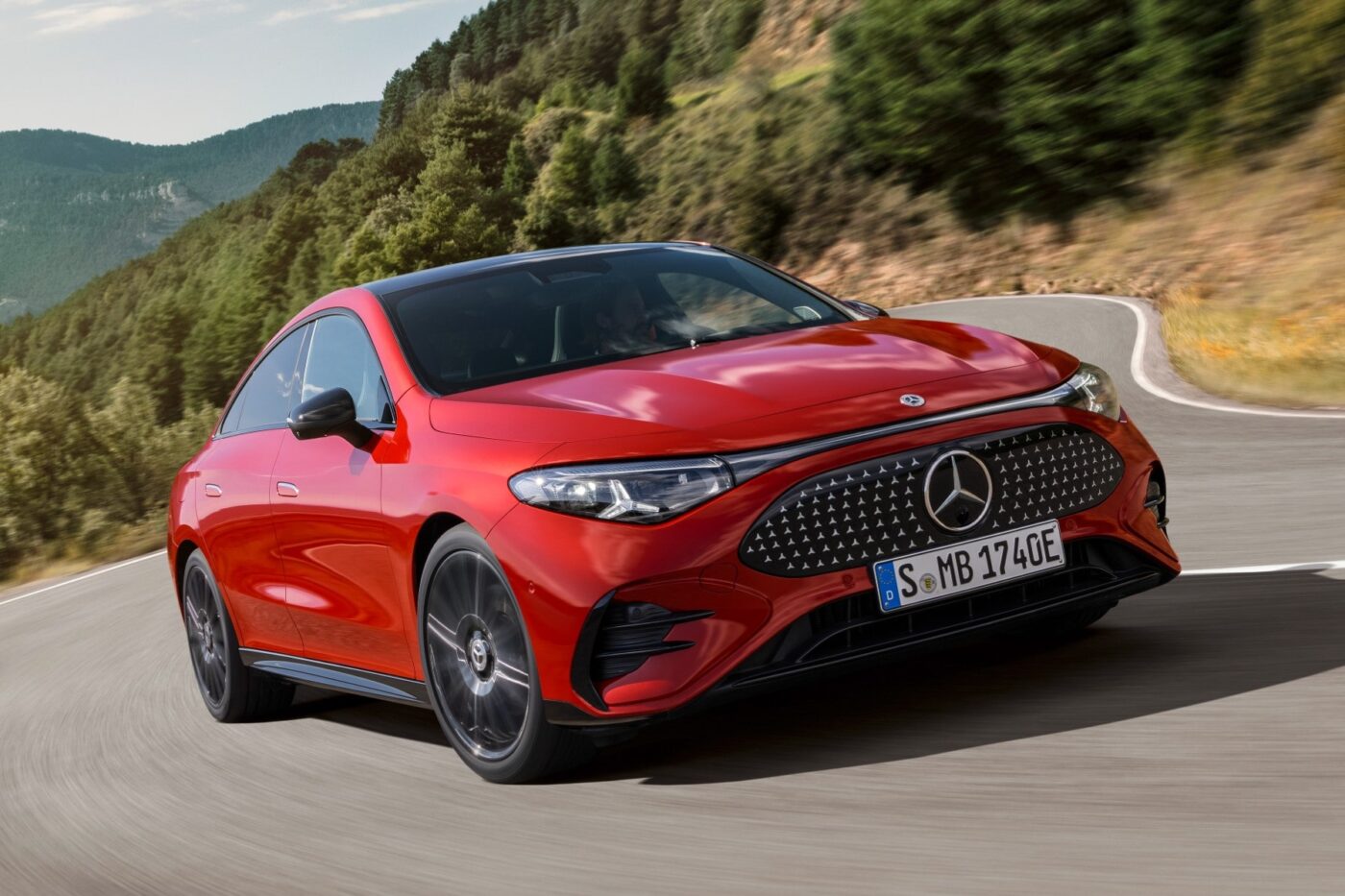
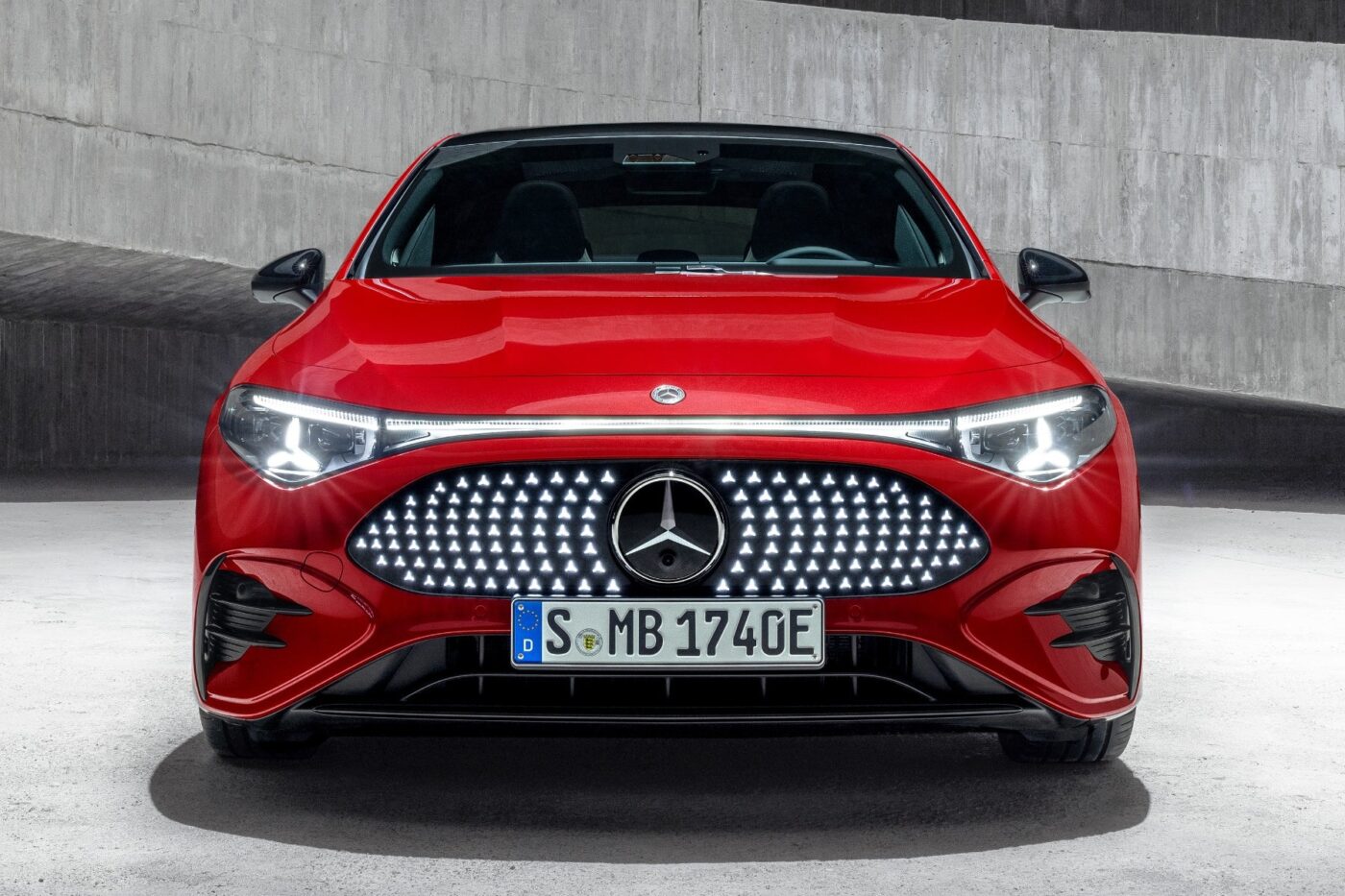
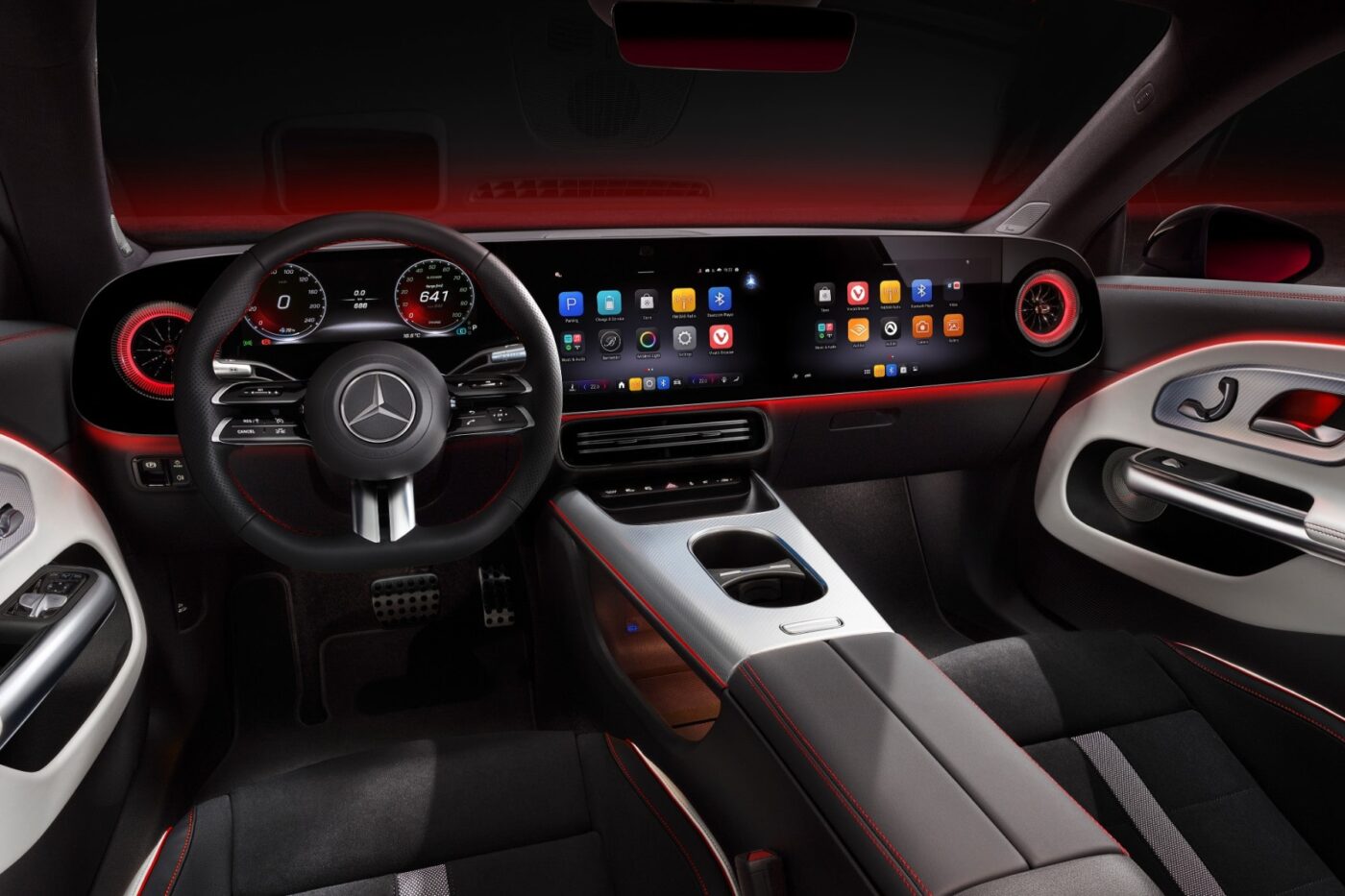
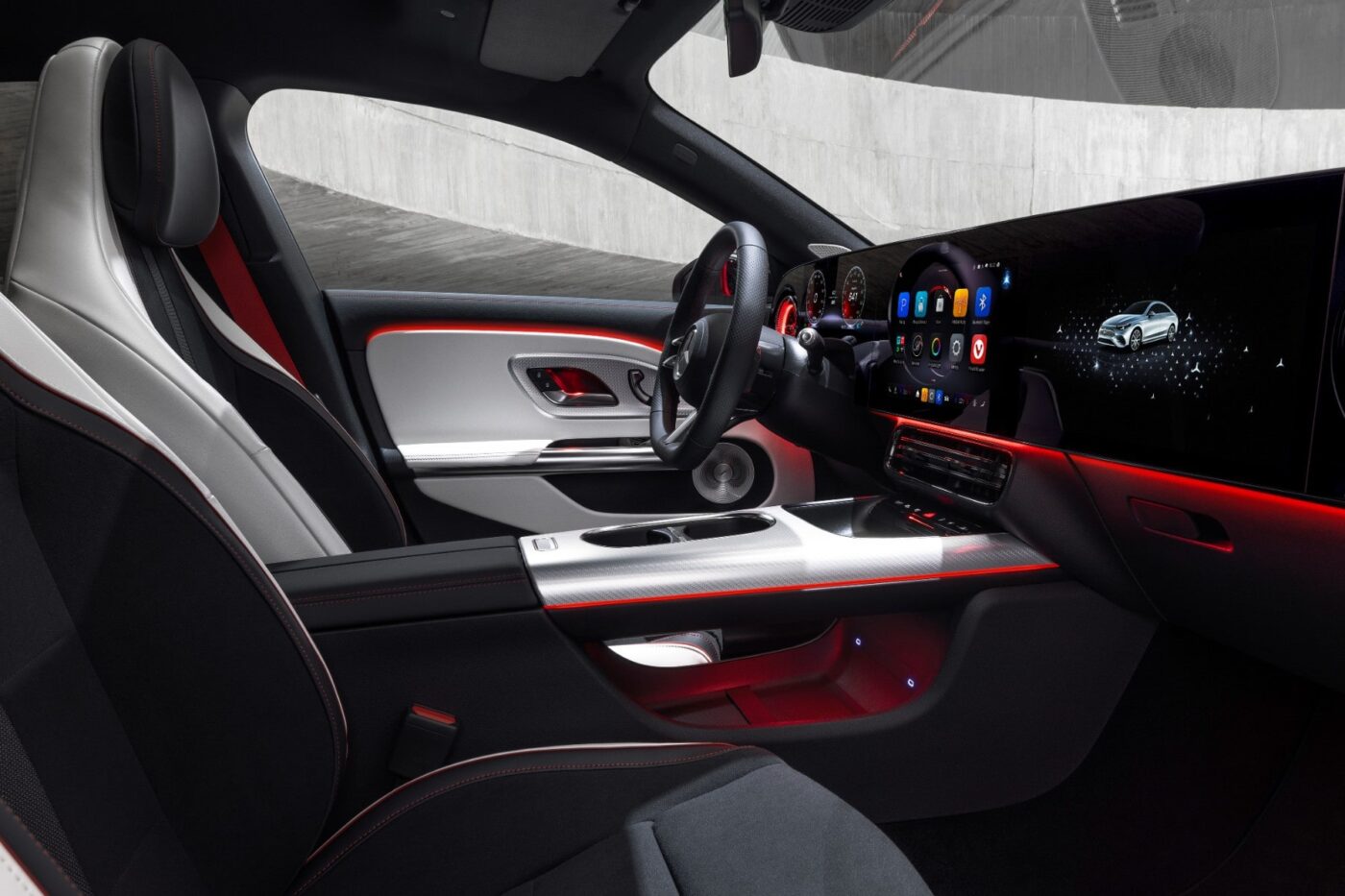
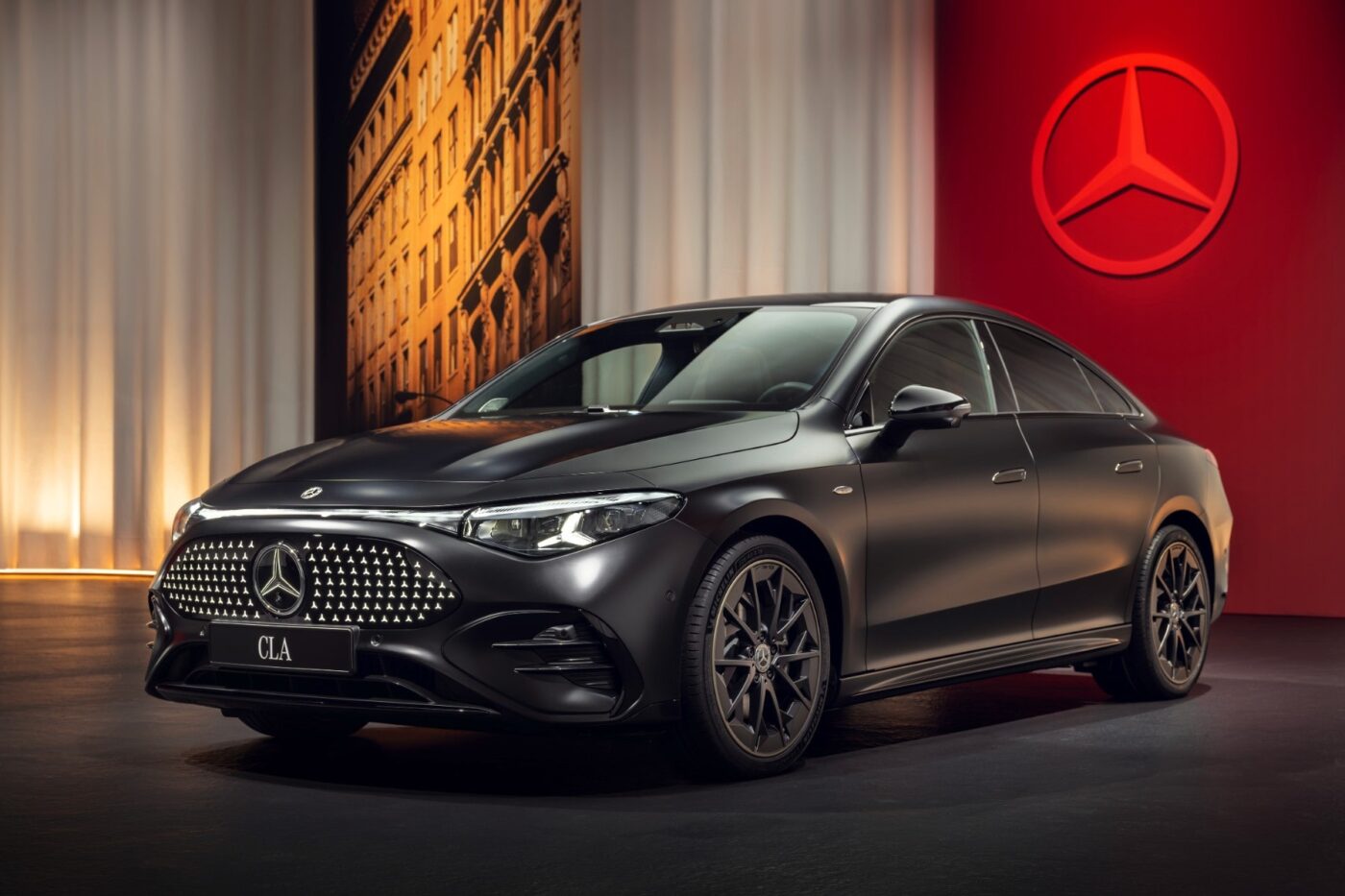
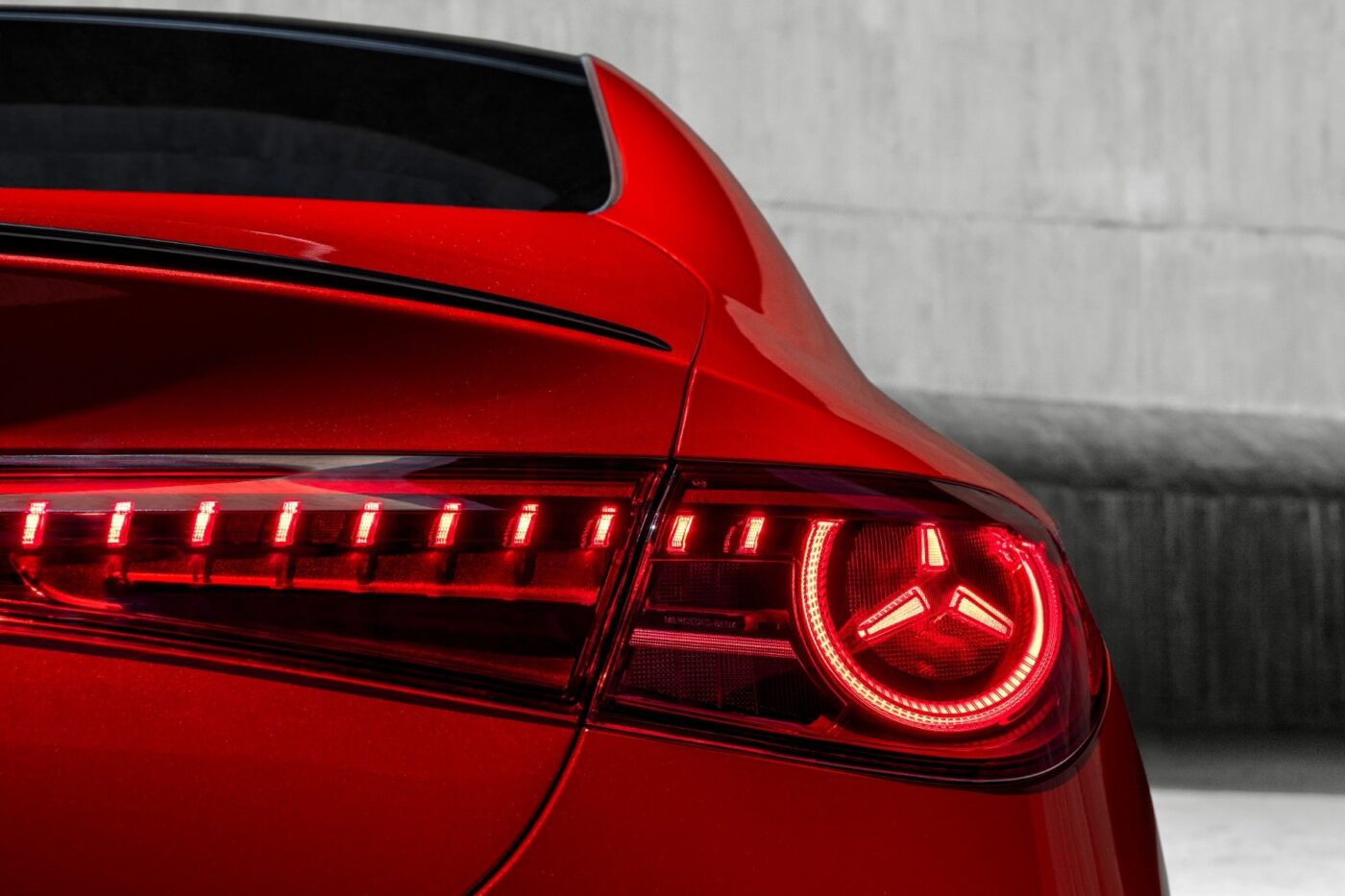
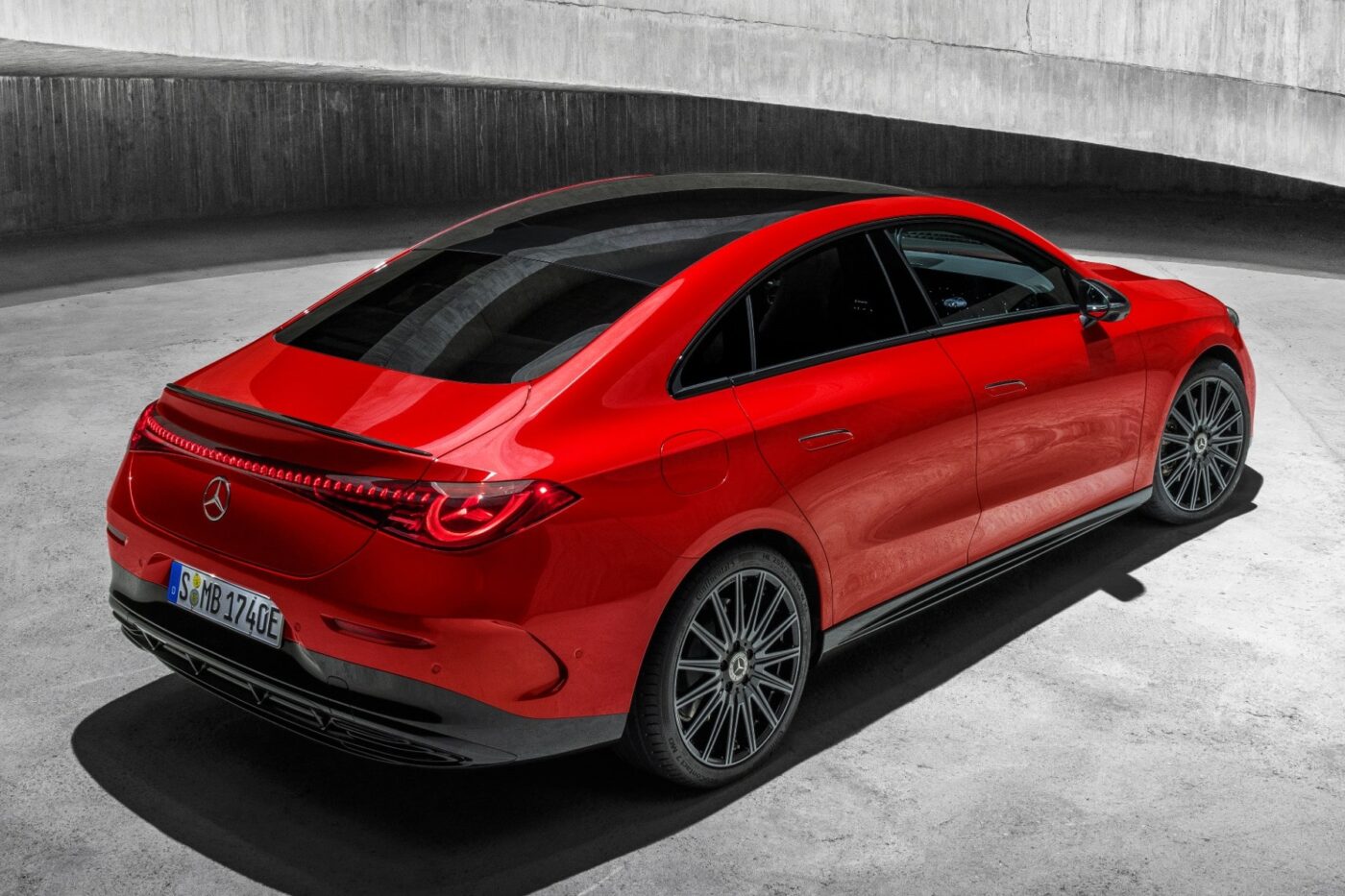
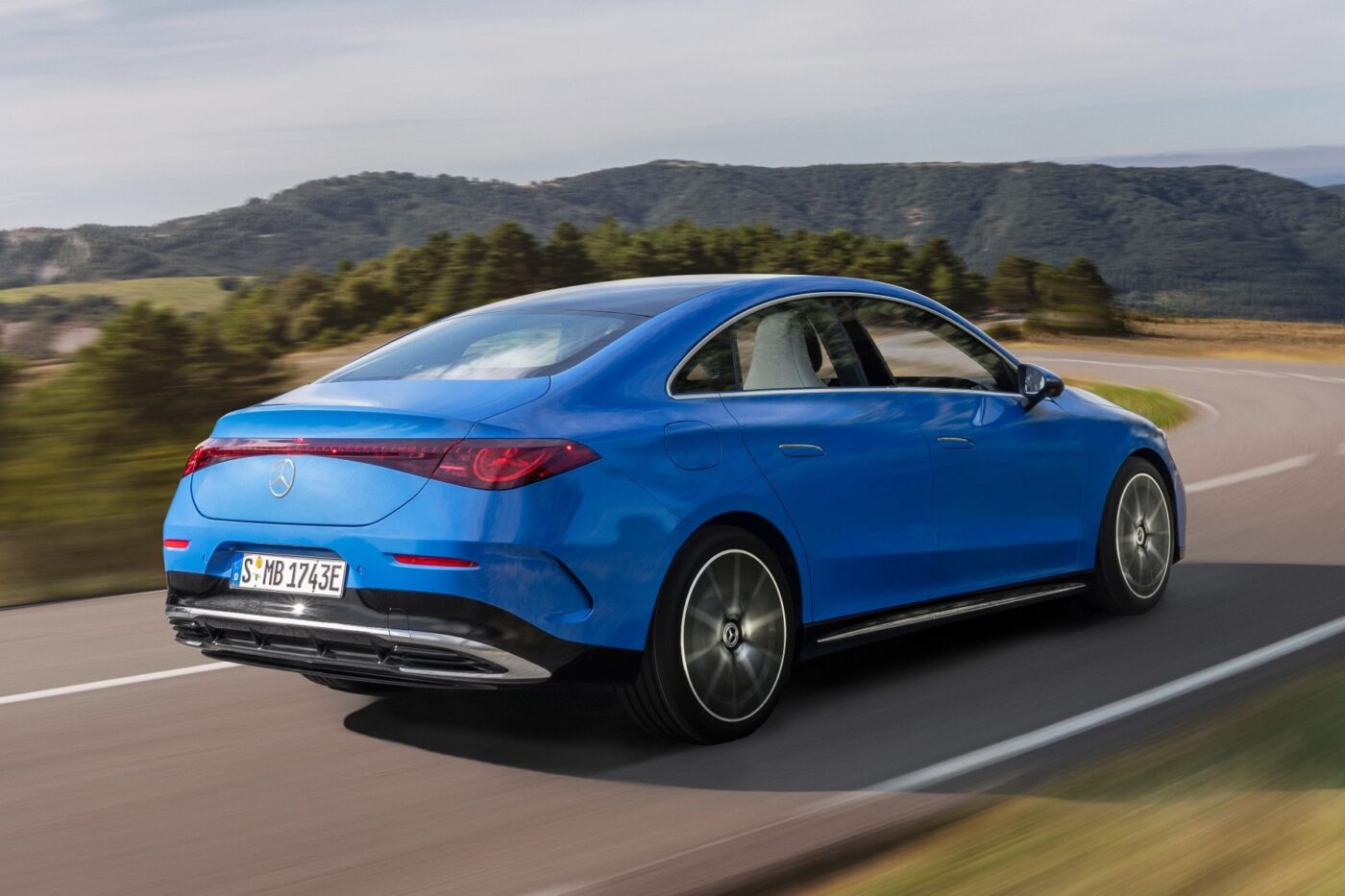
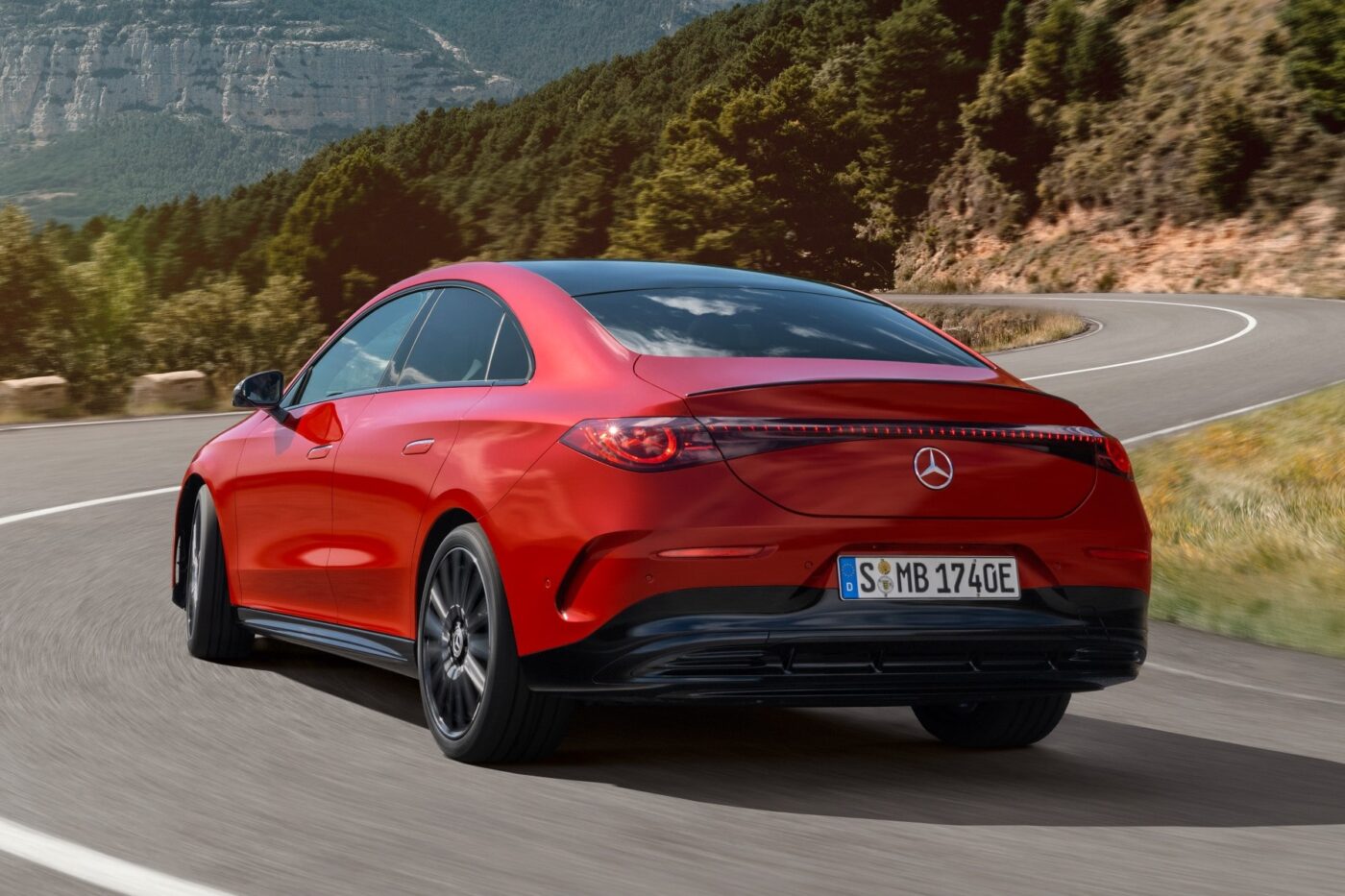
While Mercedes announced the (usable!) energy content of the batteries and the targeted DC charging power of 320 kW for the large battery pack as early as last autumn, all the relevant data for the two models offered at launch are only now known with the world premiere. The CLA 250+ is by no means the base model with the 58-kWh LFP battery, but rather the rear-wheel-drive variant with the large NMC battery – at Mercedes, the ‘+’ in the model designation continues to stand for the version of a model series with the longest range.
There is no further information yet about the LFP model, which will probably be called the CLA 200. This variant will only be available to order at a later date. According to the WLTP measuring method, the CLA 250+ is capable of up to 792 kilometres in the combined cycle. Depending on the equipment, energy consumption should be between 12.2 and 14.1 kWh/100 km – Mercedes announced 12 kWh/100 km and was thus narrowly achieved.
In this variant, only the eATS 2.0 with the 200 kW output mentioned in the autumn is used. The permanent magnet synchronous motor (PMSM) offers high energy density, but according to Mercedes, despite the permanent magnets, it should have “a significantly lower proportion – almost zero per cent – of heavy rare earths” than in earlier engine generations. The power electronics with a silicon carbide (SiC) inverter are also designed for particularly efficient energy use. The same applies to the two-speed transmission, thanks to which the eATS 2.0 is said to combine dynamics with high efficiency. “First gear enables excellent acceleration from a standing start, a high towing capacity and plenty of efficiency in city traffic,” explains Mercedes-Benz – incidentally, the towing capacity is 1.8 tonnes. “Second gear is designed for power delivery at high speeds and for high efficiency on the motorway. It ensures excellent range and comfort on long journeys.” For long-distance driving, Mercedes claims a 93 per cent efficiency rate from the battery to the wheel.
| CLA 250+ | CLA 350 4MATIC | |
|---|---|---|
| Drive | RWD | AWD |
| Power | 200 kW | 260 kW |
| Torque | 335 Nm | 515 Nm |
| Acceleration | 6.7 s | 4.9 s |
| Top speed | 210 kph | 210 kph |
| WLTP Range | 792 km | 771 km |
| Battery | 85 kWh | 85 kWh |
| Charging capacity DC | 320 kW | 320 kW |
| Charging time DC 10-80% | 22 min | 22 min |
| Price | – | – |
In addition to the 200-kW unit on the rear axle, the CLA 350 4MATIC also has a further PSM with 80 kW of power on the front axle, which is built by a supplier for the Stuttgart-based company. The system output is now 260 kW, which is slightly less than the sum of the two individual outputs of the motors. A decoupler unit allows the front electric motor to be switched on or off in fractions of a second, thus achieving the balancing act between efficiency and dynamics here too – with a slight focus on efficiency. Thanks to consumption figures between 12.5 and 14.7 kWh/100 km, even the all-wheel drive model achieves high ranges of up to 771 kilometres, according to WLTP. So, it’s not much less than the CLA 250+.
The way recuperation is controlled is also new in the CLA. Instead of using shift paddles, the four levels can be adjusted via the transmission mode selector lever: pulling the selector lever towards the steering wheel increases the level of recuperation. If you push the lever towards the driver’s display, however, the energy recovery is reduced accordingly. There are four levels to choose from: ‘D Auto’ (intelligent recuperation), ‘D+’ (no recuperation/coasting), ‘D’ (standard recuperation up to 1 m/s2) and ‘D-’ (increased recuperation up to 3 m/s2). For reasons of efficiency, almost all braking is done entirely by recuperation. According to Mercedes, recuperation is even possible in ABS control or on icy roads.
The efficiency efforts do not stop at the drive. During his first test drive in the CLA prototype, our reporter Thomas Geiger told us how quiet it is in the interior – an indication of the car’s excellent aerodynamics, which hardly create any air turbulence and thus reduce drag. The new CLA is the first Mercedes to have a multi-source heat pump as standard. This air-side heat pump no longer takes a detour via a water circuit and, as a so-called multi-source model, can also use three energy sources in parallel: the waste heat from the electric drive and the battery, as well as the ambient air. “By using this ‘free’ heat, the air-to-air heat pump contributes to the high efficiency of the CLA. It requires about a third of the electrical energy that a comparable auxiliary heater would need for the same output,” explains the German carmaker. As already explained at the technology workshop in November, the 800-volt system with the smaller cable cross-sections should also contribute to overall efficiency.
Another focus of the 800-volt technology, however, is clearly that of fast charging. In conjunction with the new battery generation with silicon in the anode, charging times should be reduced “significantly” – the interplay between high range and short charging time has also been summarised by Mercedes as “time efficiency” in its quest for efficiency. With a peak of up to 320 kW, the standard charging process from 10 to 80 per cent should take 22 minutes. Since 59.5 kWh of the 85 kWh net energy content flows into the battery during this window, the average charging power is still 162 kW. In other words, at 320 kW at peak, the charging curve will drop noticeably, and part of the standard charging process will also be below 120 kW to reach this average value. The CLA charging curve will probably not be as flat as that of the latest E-GMP models from Hyundai-Kia, which can charge to 80 per cent in 18 minutes with 84 kWh gross (!) and 260 kW at the peak.
In fact, the Mercedes may charge a little slower at higher charge levels, but it charges particularly quickly at the beginning: the CLA 250+ should recharge 325 WLTP kilometres in ten minutes, and in the CLA 350 4MATIC, 315 kilometres – a good 41 per cent of the total range. If we apply this to a city charging level of ten per cent, the CLA is at over 50 per cent state of charge after just ten minutes. The remaining 30 per cent to the usual 80 per cent mark should then take another twelve minutes.
Despite the significant increase in charging capacity, the scope of the battery certificate for the EQA and EQB series continues to apply to the electric CLA. Mercedes-Benz guarantees that the maximum battery capacity of the high-voltage battery will not be less than 70 per cent for a total of eight years or up to a total mileage of 160,000 kilometres (whichever comes first).
Let’s leave the calculations and speculation behind and look at the known facts again: The fourth-generation MBUX navigation system (as Mercedes calls its infotainment system) in the CLA is based on Google Maps. “Developed as part of the Google and Mercedes-Benz partnership, the navigation solution in the CLA is one of the first systems to integrate Google Cloud’s new Automotive AI Agent for in-vehicle use with Google Maps,” says Mercedes. The navigation system with ‘Electric Intelligence’ is designed to plan “the fastest and most comfortable route, including charging stops, based on numerous factors” – it will also take into account traffic jams or a change in driving style (with higher or lower fuel consumption). Mercedes even wants to include the predicted wind conditions along the route. In addition, data on topography, route, ambient temperature, speed, heating and cooling requirements will be taken into account.
If the system detects that a charging stop is necessary, it is planned to optimise the overall travel time. As explained above, the charging capacity is significantly higher up to around 50 per cent than between 50 and 80 per cent, so two very short charging stops can be faster overall than one longer charging stop – although ‘longer’ still means a good 22 minutes in the CLA. And just because the car suggests a ten-minute charging stop (which is hardly enough time for a toilet break at a motorway service station), it doesn’t mean that you can’t take a longer break yourself. The system recalculates the route and, if necessary, removes the second charging stop from the route guidance. The battery is automatically preconditioned for planned charging stops – the multi-source heat pump also helps here. The system ensures that the high-voltage battery is at the optimum temperature at the right time. As announced, Mercedes is introducing a reservation function at its own charging parks in Germany and the US: the system automatically reserves a charging space about 15 minutes before arrival via the MB.CHARGE Plus charging service.
If the CLA is charged at home, on the other hand, it can serve as energy storage – at least in the future. The electric car is prepared for bidirectional charging and networking with the power grid. It is how vehicle-to-home (V2H) or vehicle-to-grid (V2G) scenarios become possible when the vehicle is “connected to a compatible bidirectional DC charging station.”
However, the bidirectional charging function will be available at a later date after the market launch with the help of an over-the-air update. “The use of bidirectional charging may be subject to market-specific conditions with regard to legislation and the requirements of energy suppliers,” says Mercedes. We recently spoke to Frank Spennemann, Senior Manager of Charging Solutions Energy at Mercedes-Benz, who told us about Mercedes’s approach to V2G technology.
Let’s take a look at another point that has not been discussed in advance either and that is new for the world premiere: the body! At 4.72 metres, the new electric CLA is around four centimetres longer than its predecessor. The changes in width (+2.5 cm to 1.86 metres) and height (+2.9 cm to 1.47 metres) are also within the range that can be expected for a new generation of vehicles today. With the focus on the electric drive system, it is hardly surprising that the increase in wheelbase is greatest at 61 millimetres to 2.79 metres – the space between the axles is needed for the battery.
| CLA | Prior model | Difference | |
|---|---|---|---|
| Length | 4,723 mm | 4,688 mm | +35 mm |
| Width | 1,855 mm | 1,830 mm | +25 mm |
| Width incl. exterior mirrors | 2,021 mm | 1,999 mm | +22 mm |
| Height | 1,468 mm | 1,439 mm | +29 mm |
| Wheelbase | 2 ,790 mm | 2,729 mm | +61 mm |
| Trunk | 405 l | 460 l | -55 l |
| Frunk | 101 l | 0 l | +101 l |
As a result, the new CLA offers its passengers more space, with dimensions such as headroom or legroom at the front increasing by up to almost three centimetres. There is slightly less room in the back seat at the shoulder (-13 millimetres) or in the footwell (-7 millimetres). Since an electric motor, including power electronics and a two-speed transmission, is now located under the boot, the loading compartment, at 405 litres according to the VDA standard, is somewhat smaller than in the predecessor (460 litres). However, the electric CLA offers a 101-litre frunk under the bonnet, which means that overall, there is actually a little more loading space, just in a different location.
Incidentally, the frunk is the same size in both CLA variants, even in the all-wheel-drive model with an electric motor on the front axle. In the previously praised E-GMP from Hyundai-Kia, the frunk shrinks to a barely usable size.
Visually, the new CLA offers what had already been seen under the camouflage foils of the often-presented prototypes and camouflage cars: the proportions with a long front bonnet remain relatively close to the combustion model, as the electric version will also be followed by a 48-volt mild hybrid with a petrol engine (then without a frunk). The headlights and rear lights, with their flowing transition to the continuous light strip at the front and rear, are reminiscent of the Smart #1 and #3 – after all, the Mercedes design team worked on these models.
However, the CLA is not a 1:1 copy of the Smart look in a sedan design, for example with the Mercedes star-shaped light elements (in the optional multi-beam LED headlights). As a major distinguishing feature, the CLA has a black panel at the front with illuminated Mercedes stars, “which reinterprets the classic chrome grille.” After the many customers who have souped up the look of the EQE and EQS, Mercedes is once again venturing into more classic car design in the electric age. But not without technical gimmicks: the illuminated radiator grille welcomes and bids farewell to the driver with various animations. Depending on the country-specific legal regulations, the central star is also fully or partially illuminated. In the USA, Canada, China and the Gulf States, the central star is fully illuminated. “In Western Europe and the ECE, as well as the rest of the world, the central star is partially illuminated (without the ring), while in South Korea and Taiwan, illumination is not allowed,” the carmaker summarises.
The rear LEDs are also integrated into the animated welcome and farewell scenarios. And here, too, the brand emphasises its heritage: “As is usual for sporty Mercedes-Benz vehicles, the licence plate is located in the bumper.” However, the rear diffuser is available in two variants – for vehicles with and without the semi-electric trailer coupling. There are ten wheel designs between 17 and 19 inches.
The change in design is more pronounced in the interior. “Instead of the previous sculpted automotive design, there is a new design concept that follows the principle of reduction to the essentials. It puts the basic body in the background and focuses on a few iconic high-tech elements. This radical reduction characterises the avant-garde style of the interior,” says Mercedes. The interior is characterised by the optional, floating ‘MBUX Superscreen,’ which extends across the entire width. Behind a large glass surface are the 26-centimetre (10.25-inch) screen for the driver and the 35.6-centimetre (14-inch) central display. A second 14-inch touchscreen can be ordered for the front passenger at a later date.
Overall, the Stuttgart-based company emphasised how “modern luxury” has been reimagined. A lot of recycled materials were used, but without affecting the overall luxurious feel of the interior. Mercedes will continue to offer many customisation options in terms of colours and materials, allowing buyers to tailor the CLA to their personal tastes – while other manufacturers are moving towards a simpler product structure and pre-configured equipment packages.
Exactly how this will work for the CLA and how Mercedes will charge for these options is not yet known. The Stuttgart-based company is keeping back some figures for the world premiere of the new CLA: the price list.

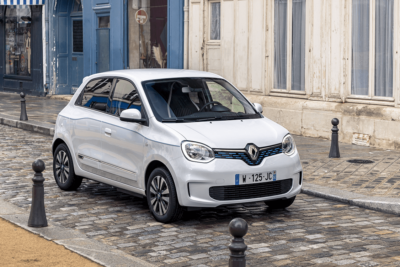
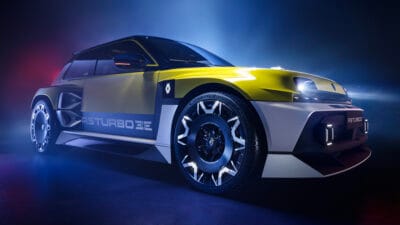
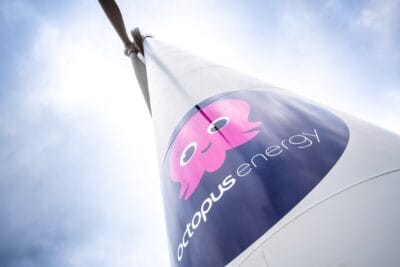
0 Comments